Chess Explorations (25)
By Edward Winter
Missed mates
A straightforward quiz question: in the game below (E. Kemeny v H.N. Pillsbury,
Philadelphia, 30 October 1895) at which move was a mate missed?
1 e4 e5 2 Nf3 Nc6 3 Bc4 Bc5 4 b4 Bxb4 5 c3 Bd6 6 d4 Nf6 7 O-O O-O 8 Nbd2 Qe7
9 Bd3 Ne8 10 Nc4 f6 11 Ne3 g6 12 Nd5 Qd8 13 Be3 Be7 14 Nd2 d6 15 f4 Ng7 16 f5
g5 17 h4 gxh4 18 Qg4 Kh8 19 Qxh4 Qd7 20 Kf2 Bd8 21 Rh1 Ne8 22 Rh3 Na5 23 Rah1
Rf7 24 Be2 Rg7 25 Bh5 Kg8 26 Bxe8 Qxe8
27 Qxh7+ Rxh7 28 Rxh7 Bxf5 29 exf5 Qf8 30 Rh8+ Kf7 31 R1h7+ Qg7 32 Bh6 Qxh7
33 Rxh7+ Kg8 34 Rg7+ Kh8 35 Ne4 Resigns.

Emil Kemeny
The present article catalogues some of the relatively little-known examples of missed mates. Another nineteenth-century illustration is J.H. Zukertort v Adair, Chicago,
10 January 1884:
Black has just captured a pawn with 23…Nf5xd4, and White replied 24 Rd2.
(The game ended 24…Nxf3+ 25 Qxf3 Rxf3 26 Rxd8 Bxd8 27 White resigns.)
A reader of the New Orleans Times-Democrat showed that there was a forced
mate in three with 24 Bg8+.
Source: La Stratégie, 15 March 1884, pages 78-79.
A couple of years later this position arose (J.M. Hanham v J.S. Ryan, New York,
1886):
White played 31 Rxe7 and won easily, but a mate in three was available through
a double rook sacrifice: 31 Rxf7+ Kxf7 32 Rxe7+ Kxe7 33 Qg7 mate. This was given
by Philip Richardson on page 254 of the International Chess Magazine,
August 1886, page 254.
From G. Mackenzie v M. Judd, 12th match game, New York, 1881:
The game ended 40 Rg6+ Kh5 41 R3g5+ Qxg5 42 Rxg5+ Kxg5 43 Qe7+ Kg6 44 Qxc7
Resigns. Steinitz reported in The Field Mackenzie’s observation
after the game that he could have played 41 Qh8+, with mate next move. A reader
of La Stratégie, Bavoux, also pointed out the possible conclusion 40
Rh5+ Kxh5 41 Qxf7+ Kh6 42 Qg6 mate. Source: La Stratégie, 15 July 1881,
pages 204-206, and 15 September 1881, page 282.
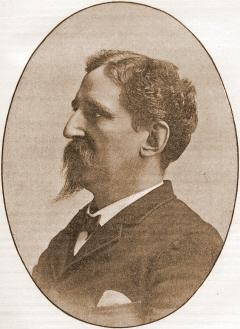
George Henry Mackenzie
The following position arose in R.J. Guckemus v F.J. Marshall, Sylvan Beach,
August 1904:
Source: American Chess Bulletin, September 1904, page 75. (If the score
of this tournament game in various databases were to be believed, Black’s
f-pawn would be at f6.) Marshall won by 27…Bxb1 28 Bc1 Bd3 29 Bb2 Bc7,
after which White resigned, but there was a quiet mate in two beginning with
27…Bc7. A curiosity is that after 28 Rxe5 Black’s bishop can mate
at either a5 or e5.
A strange game occurred between P.S. Leonhardt and E. Znosko-Borovsky in Ostend
on 27 June 1906:
1 f4 d5 2 e3 c5 3 Bb5+ Nc6 4 Nf3 Bd7 5 b3 e6 6 Bb2 Nf6 7 O-O Bd6 8 Nc3 a6 9
Bxc6 Bxc6 10 Ne2 Qe7 11 Ne5 Bxe5 12 fxe5 Ng4 13 h3 Nh6 14 Qe1 O-O 15 g4 Qg5
16 Kh2 Rad8 17 Rf4 d4 18 exd4 cxd4 19 Ba3 d3 20 cxd3 Qxe5 21 Bxf8 Kxf8 22 Kg1
Rxd3
Now White, in time pressure, put his queen en prise, but Black overlooked
23…Qxe1+ (with mate next move).
23 Nc1 Qxf4 24 Nxd3 Qf3 25 Nf4 Qxf4 26 White resigns.
Source: La Stratégie, 20 September 1906, page 276.
Next, a curiosity from the game I. Spero v J.W. Showalter, Louisville, 1922:
In this position a draw was agreed. White thus overlooked mate in two with
34 Nxf6+, a possibility which both players saw two minutes after the game was
over. Source: American Chess Bulletin, December 1922, page 191.
Then there is a double example, which we took from pages 215-216 of the Australasian
Chess Review of 20 August 1933 (W. Winter v J.E.W. Gemzøe, Folkestone Olympiad,
21 June 1933):
1 c4 e5 2 Nf3 Nc6 3 Nc3 Nf6 4 d4 exd4 5 Nxd4 Bb4 6 Bg5 h6 7 Bh4 O-O 8 Rc1 Ne5
9 e3 Ng6 10 Bg3 Ne4 11 Bd3 Bxc3+ 12 bxc3 Nxg3 13 hxg3 Ne5 14 Bb1 d6 15 Qc2 f5
16 Rh5 Qe8 17 Qe2 Ng4 18 Rh4 g5 19 Bxf5 Nxf2 20 Rxh6 Bxf5 21 Qxf2 Bd3 22 Nf3
g4 23 Rd1 Be4 24 Rd4 gxf3 25 gxf3 Rxf3 25 Qh2 Kg7 26 Qh2 Kg7 27 Qh4 Bf5
28 Rg4+ Bxg4 29 Qg5+ Kf7 30 Rh7+ Ke6 31 Qxg4+ Ke5 32 Qg5+ Ke4
33 Qh4+ Kd3 34 Qd4+ Kc2 35 Rh2+ Kb1 36 Qd1 mate.
As mentioned in C.N.s 213 and 259 (see page 262 of Kings, Commoners and
Knaves), a couple of mates in two were found shortly afterwards: 28 Qf6+
Kg8 29 Rh8 and 33 Qd5+ Kxe3 34 Qd4.
The above photograph (from C.N. 4356) of William Winter was sent to us by Luc
Winants (Boirs, Belgium), from the collection of Daniël De Mol.
Even specimens of a mate in one being overlooked are less scarce than might
be thought. In C.N. 414 W.H. Cozens pointed out a number of master
games (the italics indicate the overlooker):
- Fisher v von Bardeleben, London, 1883
- Carls v Whitaker, The Hague, 1928
- Gligorić v Böök, Saltsjobaden, 1948
- Smyslov v Flórián, Moscow-Budapest match, 1949
- Bronstein v Gligorić, Moscow, 1967.
Readers may care to find these scores, and the missed mates, for themselves,
but the nineteenth-century game is given here:
1 e4 c5 2 Nf3 e6 3 Nc3 Nc6 4 d4 cxd4 5 Nxd4 Nf6 6 Nxc6 bxc6 7 Bd3 d5 8 exd5
cxd5 9 Bg5 Be7 10 O-O O-O 11 a3 Bb7 12 Kh1 e5 13 f3 h6 14 Bh4 Nh5 15 Bf2 Nf4
16 Bg3 Bg5 17 Re1 Re8 18 Ne2 Qf6 19 Bxf4 Bxf4 20 Bb5 Red8 21 c3 e4 22 Nd4 Qh4
23 g3 Bxg3 24 Re2 exf3 25 Nxf3 d4 26 Rg2 Qh5 27 Nxd4 (‘The tournament
book has a note at this very move, but also fails to see the pinmate’,
remarked Cozens in C.N. 414.)
27…Bxg2+ 28 Kxg2 Qxh2+ 29 Kf3 Qf2+ 30 Ke4 Qf4+ 31 Kd3 Qf5+ 32 Kc4 Qd5+
33 White resigns.
Source: tournament book, pages 311-312.
So far we have found only one published game, a minor skirmish between George
H. Selkirk and J.C.R (in which White gave the odds of his queen’s rook),
where a mate in one was overlooked on consecutive moves:
1 e4 e5 2 Nf3 Nc6 3 Bc4 Bc5 4 O-O Nf6 5 d4 exd4 6 e5 d5 7 exf6 dxc4 8 Re1+
Be6 9 Ng5 Qd5 10 Nc3 Qf5 11 g4 Qxf6 12 Nd5 Qd8 13 Rxe6+ fxe6 14 Nxe6 Qd7 15
Qe2 Be7 16 Ndxc7+ Kf7 17 Qxc4 Ne5 18 Qb3 Kf6 19 g5+ Kg6 20 f4 Nc6 21 f5+ Kxf5
22 Qd3+ Kg4 23 Qe4+ Kh5
24 h4 h6 25 Qf3+ Kg6 26 h5+ Kh7 27 g6+ Kg8 28 Qf7 mate.
Source: Land and Water, 1 November 1873. Selkirk was the author of The
Book of Chess (London, 1868) and, the previous year, Guide to the Cricket-Ground.

The position below (White to move, in A. Steiner v L. Prins, Munich Olympiad,
1936) may be recalled from an Unsolved
Chess Mysteries article:
White played 32 Nxh5 Nf7 33 Ng7+ Resigns.

Above is the game on page 81 of Olympische Blitzsiege by E.J. Diemer
(an undated book published in Kecskemét).
From another tournament game (C. Schlechter v J. Mieses, Leipzig, 13 September
1894):
Black played 30…Qe7, and Schlechter continued with 31 Qh6+. Despite missing
the mate in one, he went on to win the game at move 52.
In C.N. 5669 Alan O’Brien (Mitcham, England) noted that on page 2 of
Anatoly Karpov His road to the World Championship by M. Botvinnik (Oxford,
1978) a mate in one was missed in the notes to the first match game between
Polugayevsky and Karpov, Moscow, 1974:

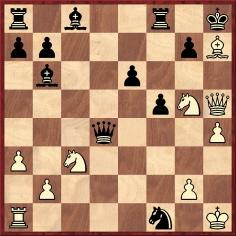
Position after 22 Kh1 (analysis by Botvinnik)
Rather than 22...Ng3+ Black has 22...Qg1 mate. The error was on page 17 of
the Russian edition, Tri Matcha Anatolia Karpova (Moscow, 1975).
For a discussion of the complicated case of Alekhine allegedly overlooking
a mate in one in his notes to Réti v Marshall, New York, 1924, see pages 283-284
of Kings, Commoners and Knaves.
Frederick S. Rhine (Park Ridge, IL, USA) added in C.N. 6140 another missed
mate in one, from the account on page 51 of ‘Mr Chess’ The Ortvin
Sarapu Story by Ortvin Sarapu (Wainuiomata, 1993):

Matanović eventually agreed to a draw after Black’s 54th move.
Below, from C.N. 2660 (see page 292 of A Chess Omnibus), is a nomination
for the worst move ever played. In the game J. Loffroy v E. Anglarès, Marseilles,
September 1928 White blundered away his queen rather than using it to give mate
in one:
Black tried the desperate 24…Bxd5, and the game continued 25 Bxg7+ Kg8
26 Rf8+ Kxg7.
Instead of 27 Qf6 mate White now played 27 Qg8+.
Source: Les Cahiers de l’Echiquier Français, issue 20, page 128.
In conclusion we return to the quiz question. In the Kemeny v Pillsbury game,
White missed a mate in one at move 33. See pages 262-263 of Kings, Commoners
and Knaves. Our source for the game is page 267 of Harry Nelson Pillsbury
American Chess Champion by Jacques N. Pope (Ann Arbor, 1996), which took
the score from the New York Daily Tribune of 31 October 1895 but did
not point out the missed mate.
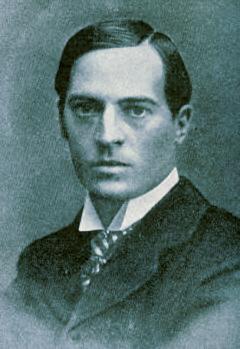
Harry Nelson Pillsbury
Submit information
or suggestions on chess explorations
All ChessBase articles
by Edward Winter
 Edward
Winter is the editor of Chess
Notes, which was founded in January 1982 as "a forum for aficionados
to discuss all matters relating to the Royal Pastime". Since then, over 6,200
items have been published, and the series has resulted in four books by Winter:
Chess
Explorations (1996), Kings,
Commoners and Knaves (1999), A
Chess Omnibus (2003) and Chess
Facts and Fables (2006). He is also the author of a monograph
on Capablanca (1989).
Edward
Winter is the editor of Chess
Notes, which was founded in January 1982 as "a forum for aficionados
to discuss all matters relating to the Royal Pastime". Since then, over 6,200
items have been published, and the series has resulted in four books by Winter:
Chess
Explorations (1996), Kings,
Commoners and Knaves (1999), A
Chess Omnibus (2003) and Chess
Facts and Fables (2006). He is also the author of a monograph
on Capablanca (1989).
Chess Notes is well known for its historical research, and anyone browsing
in its archives
will find a wealth of unknown games, accounts of historical mysteries, quotes
and quips, and other material of every kind imaginable. Correspondents from
around the world contribute items, and they include not only "ordinary readers"
but also some eminent historians – and, indeed, some eminent masters. Chess
Notes is located at the Chess
History Center. Signed copies of Edward Winter's publications are
currently available.




















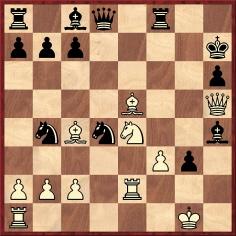

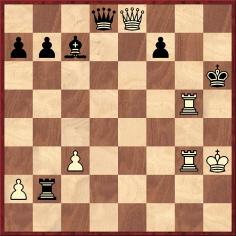

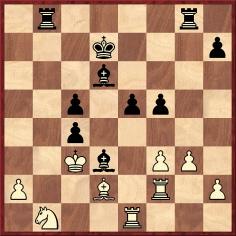


















 Edward
Winter is the editor of
Edward
Winter is the editor of 




